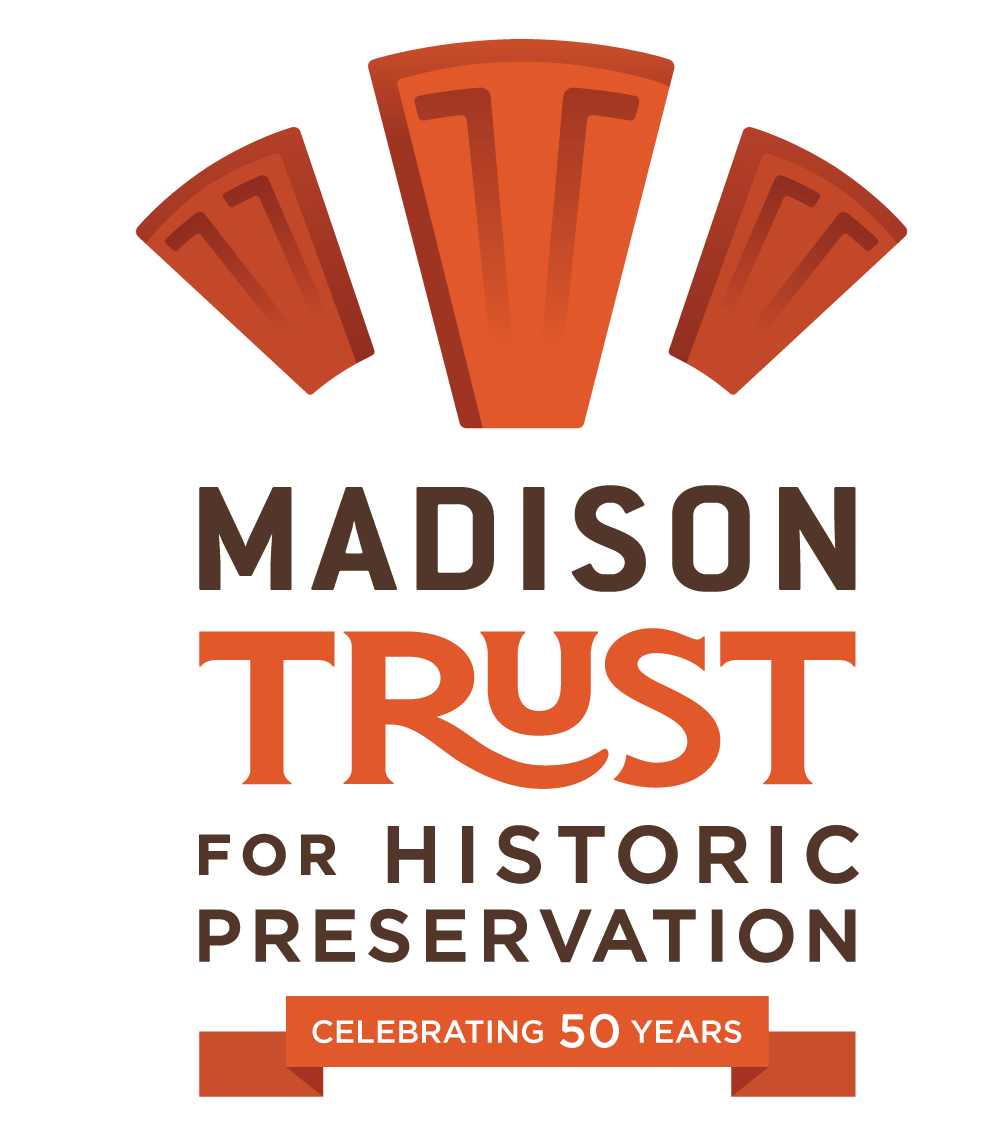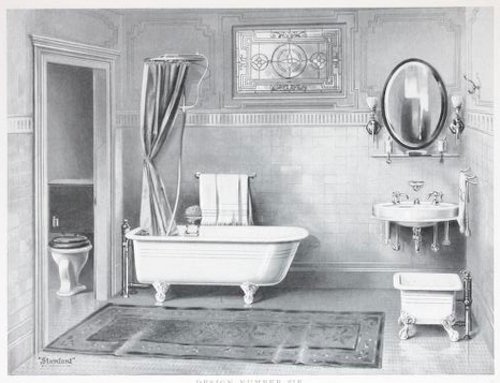The intersection of Main and Carroll Streets has long been a prominent site on the Capitol Square. While that’s due partly to the presence of the Park Hotel, it’s also a function of topography. Moving counterclockwise around the capitol, whether on foot or on wheels, the slow rise of Carroll Street enhances the presence of the building at the corner of the square ahead. In Madison’s early years, that was the buff-colored building visible just above the trees on the left side of the postcard view above. This month I look at that building and what has followed it.
Read MoreCast iron is an ancient material. By the eighteenth century it was employed in the United States for framing industrial buildings and by the 1840s was used for cast-iron façades. As it became popular across the country, decorative cast-iron appeared on Madison buildings in the 1850s. For architectural purposes it could be put to many uses, structural and decorative, since it was easily cast in a range of forms and styles, and it was inexpensive, especially compared to stone.
Read MoreThe National Register of Historic Places was created in 1966 as a provision of the National Historic Preservation Act. When President Lyndon Johnson signed the bill on October 16, two buildings became the first Dane County entries on the register: the Robert M. La Follette House in Maple Bluff (733 Lakewood Blvd.) and North Hall on the University of Wisconsin-Madison campus. Dane County now has 272 buildings, structures, effigy mounds, and other places on the National Register. Since I started writing these posts a little more than four years ago, I’ve done a biennial report of recent additions to the National Register. Read on for the summaries of nine properties that were added in 2022 and 2023.
Read MoreThis time of year, I get itchy feet. There are buildings and places to see, but limited daylight, cold temperatures, and snow and ice (when they come) make that difficult if not impossible. One way to satisfy the itch is through the small screen, be it a TV or laptop. This month I offer a small sample of television programs, video presentations, and lectures that may help the architecture enthusiast cope as daylight slowly increases and temperatures creep up.
Read MoreCelebrating Madison’s historic places is at the heart of our mission at Madison Trust for Historic Preservation. Since this is a season full of celebrations, there is no better time to spread the joy to be found in vintage buildings with a gift from the Madison Trust and others—a membership, walking tour tickets, note cards, books, ornaments, and much more. We also have further suggestions for locally focused gifts that spotlight the places that make Madison and Wisconsin special.
Read MoreArtists sometimes paint self-portraits, authors occasionally write autobiographies, and architects often design their own houses. This month, I look at houses designed by three Madison architects for their own families. Each architect had a career that spanned decades and did a range of work for a variety of clients.
Read MoreRailroads—instrumental to the making of the United States as we know it—played a profound role in Madison’s growth and development. At their zenith, steel rails of three companies fanned out from the city in nine directions. Around the turn of the twentieth century, well more than one hundred trains (freight and passenger combined) rolled over those lines everyday. Rail declined across the country following World War II and the last passenger train pulled out of Madison in 1971, but freight service began to rebound in the 1980s. Evidence of Madison's railroad past is all over the city. Discover some of it in this blog post by Scott Lothes, president and executive director of the Center for Railroad Photography & Art (www.railphoto-art.org), the Madison Trust's partner in this year's Specialty Tour.
Read MoreThis month I look back only 25 years to the 1998 Parade of Homes presented by the Madison Area Builders Association (MABA). I appreciate that 25-year-old houses may not be “historic” to many preservationists. The Madison Landmarks ordinance has no minimum age requirement, while the National Register of Historic Places generally requires that properties be at least 50 years of age. In fact, houses of any age have things to tell us about design, social status, marketing, and more.
Read MoreMadison got off to a slow start. It was a city on paper when selected as the territorial capital in 1836. Ten years later, when Madison received its village charter, there were only 626 residents. But soon, the boom began and Madison attracted entrepreneurs and hustlers, capitalist and swindlers, opportunists and optimists. When chartered as a city in 1856, the population was 6,863. Among the newcomers were James and Susan Bowen, who arrived in 1852.
Read MoreThe prow roof saw widespread use in the years following World War II, projecting an image of the modern in a country energized by unprecedented growth. At their most exuberant, prows that soar evoke the Jet Age, while more commonplace uses demonstrate the adaptability of the form. Last month I focused on places of worship and this month I turn my attention to the prow roof in residential, commercial, and recreational applications.
Read MoreThe prow roof has a long history, but is best known today for its use in mid-century design from the 1940s to the 1970s. Twentieth-century prows are the focus of my posts for the next two months, first highlighting ecclesiastical prows and then featuring prows on nonreligious buildings next month. As is my practice in these posts, the emphasis will be on local buildings which are easily seen in person, though I’ll expand my scope with examples from elsewhere in Wisconsin.
Read MoreWhen Mayor Albert Schmedeman presided at the opening of Madison’s Nine Springs sewage disposal plant in June of 1928, he also formally put James Mackin in charge of the new facility. In his first city job in 1897, Mackin supervised laying a sewer line as Madison prepared to open its first sewage treatment plant. He was named superintendent of the system in 1916, a job he held until his death at 66 in 1930. Mackin’s 33 years on the payroll saw big changes in Madison’s treatment of wastewater and its quality of life.
Read MoreBuildings change over time. That’s self-evident. It’s also true that there are myriad resources to find out how change comes to the places we build, alter, and (sometimes) demolish. This month I’ll focus on postcards as records of how several buildings have changed.
Read MoreFor long-time residents of South Madison, the title of Linda Friend’s 2010 documentary “Style & Grace” needs little explanation. They know that Style & Grace was a barbershop at 1610 Gilson Street that served as a gathering place for the city’s Black community for decades. This past November 3rd, the Madison Trust’s Community Education Comittee was proud to co-host a screening of the film, which shows a day in the life of the barbers, their customers, and the sense of neighborhood belonging they sustained.
Read MoreFinding the right holiday gift can be a challenge and while the Madison Trust may not have matched pajama sets or fruitcakes, we have plenty to offer those on your list. A present of the past is always in fashion whether it’s historic architecture walking tour tickets, Madison Trust t-shirts, an annual membership or notecards. Here is our annual list of giving ideas for those who love fine vintage buildings.
Read MoreFor some time, a house at the corner of Spooner Street and Keyes Avenue has caught my eye when taking the back way to Trader Joe’s on the west side. It fits my notion of a “French Provincial” house, a style that doesn’t get much attention relative to competing period revivals—Colonial, Tudor, Georgian, Mediterranean—that blossomed in the early twentieth century. The house at 1802 Keyes Avenue (1928) got me to thinking about French-style houses in our area.
Read MoreThis fall the Chazen Art Museum is hosting "Sifting and Reckoning: UW-Madison's History of Exclusion and Resistance." The exhibit is the culmination of the university's three-year Public History Project to examine legacies of racism on and near campus. Our Community Education Committee Chair, Kevin Walters, provides an overview of the project and explains why anyone interested in historic preservation should take the time to visit. It's free and open to the public during museum hours from September 12th to December 23rd.
Read MoreIn 1951 St. John’s Lutheran Church in Madison, “established the principle that any expansion of facilities should be at our present location. We would be a central city congregation, attempting in as many ways as possible to serve people in the central city.” At the time of this declaration, the congregation was nearly 100 years old and had been at home at the corner of East Washington Avenue and North Hancock Street for 83 years. Today, 71 years later, St. John’s is on the same site with big plans to remain. If the future unfolds according to a proposal in the works, as soon at 2025 St. John’s would be housed in a new, ten-story high-rise with space for local nonprofits and more than 100 affordable housing units.
Read MoreWe all know that places hold an incredible power. The stories told by our older places are what make our communities distinctive, give them unique character, and make them a someplace instead of an anyplace. We all have places that mean the world to us personally, and we’ve all felt the power of being in the very spot where something significant happened to change the course of history. No book or image can quite capture being there. When we lose these places, however, we lose not only that history, but the ability of today’s and future generations to access those stories. We lose not just the past but the future.
Read MoreOne upon a time, a castle stood on East Gorham Street. It was built by Benjamin Walker who had come to Madison with his family in 1861 and who, as the story is told, longed for a home that connected him to his native England. Learn more about this unique style in Wisconsin.
Read More



















